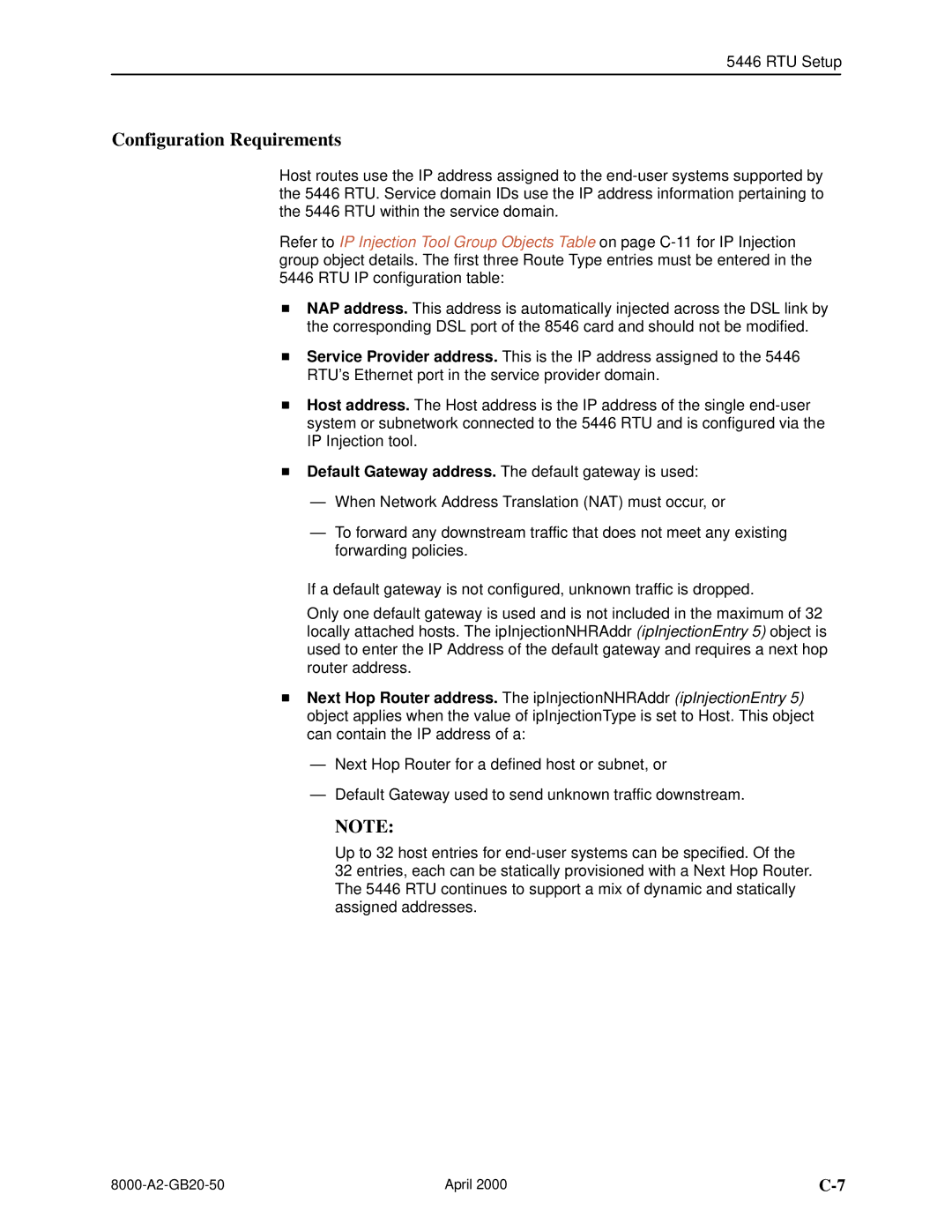5446 RTU Setup
Configuration Requirements
Host routes use the IP address assigned to the
Refer to IP Injection Tool Group Objects Table on page
5446 RTU IP configuration table:
HNAP address. This address is automatically injected across the DSL link by the corresponding DSL port of the 8546 card and should not be modified.
HService Provider address. This is the IP address assigned to the 5446 RTU’s Ethernet port in the service provider domain.
HHost address. The Host address is the IP address of the single
HDefault Gateway address. The default gateway is used:
—When Network Address Translation (NAT) must occur, or
—To forward any downstream traffic that does not meet any existing forwarding policies.
If a default gateway is not configured, unknown traffic is dropped.
Only one default gateway is used and is not included in the maximum of 32 locally attached hosts. The ipInjectionNHRAddr (ipInjectionEntry 5) object is used to enter the IP Address of the default gateway and requires a next hop router address.
HNext Hop Router address. The ipInjectionNHRAddr (ipInjectionEntry 5) object applies when the value of ipInjectionType is set to Host. This object can contain the IP address of a:
—Next Hop Router for a defined host or subnet, or
—Default Gateway used to send unknown traffic downstream.
NOTE:
Up to 32 host entries for
April 2000 |
